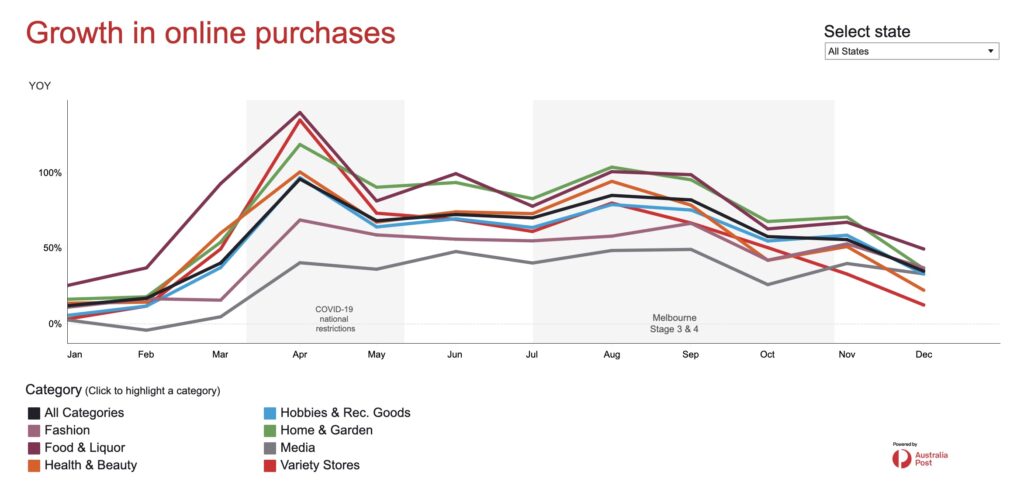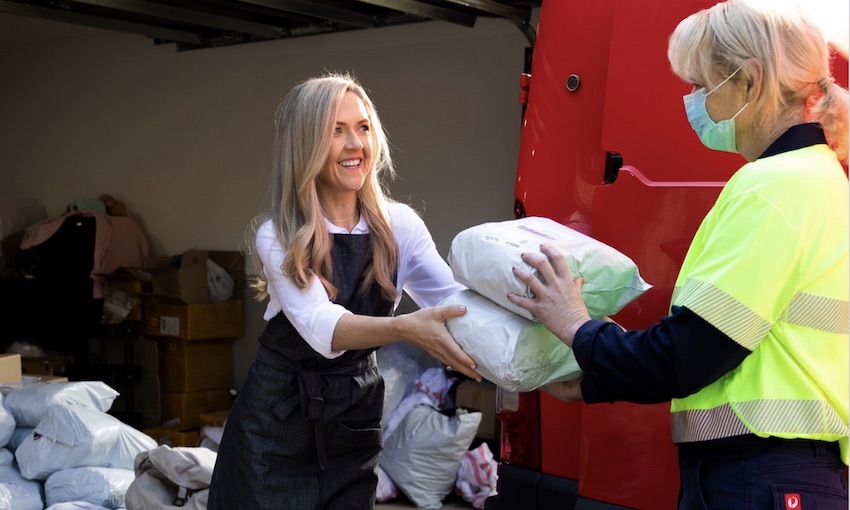AUSTRALIAN online shopping reached an all-time high in 2020, with the COVID-19 pandemic driving a huge shift in online shopping behaviour.
According to Australia Post’s Inside Australian Online Shopping 2021 report, an average of one million extra households shopped online every month, when compared to 2019.
Online purchases grew by 57% year-on-year, adding up to a total spend of $50.46bn at the online checkout.
Metro purchases were up 60% and regional purchases up 50.7%.
April saw the first significant spike in online growth. Food and liquor items and home and garden purchases more than doubled compared to 2019, and were the only categories which saw triple digit growth twice in 2020.
“The events of 2020 and ongoing effects saw a shift in the industry that we could never have foreseen,”said Ben Franzi, general manager parcel and express services at Australia Post.
“One thing is clear, the resulting transformation has brought about a significant step-change for e-commerce in Australia.”
Last year, nine million Australian households shopped online – that’s 82% of all households.
At the height of the first COVID-19 wave, the national lock-down saw online purchase growth rise to a level that had not been seen before outside of a key sales period. Then again, during Victoria’s second wave, a new record was set eclipsing the initial growth numbers.
Although restrictions eased and online shopping activity softened, volumes never returned to the pre-pandemic level. This was evident in November when the combination of the Cyber Sales and people shopping early for Christmas saw the month become the biggest in Australian online shopping history.

Online shopping was initially driven by necessity while bricks and mortar stores were closed, and this habit became ingrained even as restrictions eased, according to Australia Post. Other factors were also at play, such as social distancing and the shift to working from home, adding to the sustained engagement with online.
“Each month saw an average of one million additional households buying online when compared to 2019,” said Mr Franzi.
“This can be attributed to two key factors: regular shoppers buying more frequently and new shoppers entering the market for the first time.”
More than 1.3 million new households entered the market last year, with the largest cohort of these shopping online for the first time in April.
“To understand their future buying behaviour, we tracked them through to December. Had they bought online out of pure necessity, or would a pattern start to form?” said Mr Franzi.
The data revealed that almost half of this new contingent continued to buy online on a frequent basis (in at least three of the months that followed April). Many of the new shoppers had converted into regular shoppers.
The data shows that the events of 2020 gave rise to a sudden and permanent shift in buyer behaviour.
“Shoppers’ habits have changed and while they are more engaged than ever, they are also more comfortable buying from a broader cross-section of retailers and categories. This poses a question for retailers,” Mr Franzi said.
“How can they improve the experience they deliver for their customers and by extension, continue to be competitive?
“In my view, it needs to be a collaborative effort. A seamless end-to-end experience is critical, and the power of partnerships between retailers, supply chains, and delivery partners is even more important, in order to continue meeting the evolving needs of our customers,” he said.
Through the early months of 2021, Australia Post has continued to see around five million households shopping online each month.
“We’ve reached a new level, and online has never been more in focus,” said Mr Franzi.

